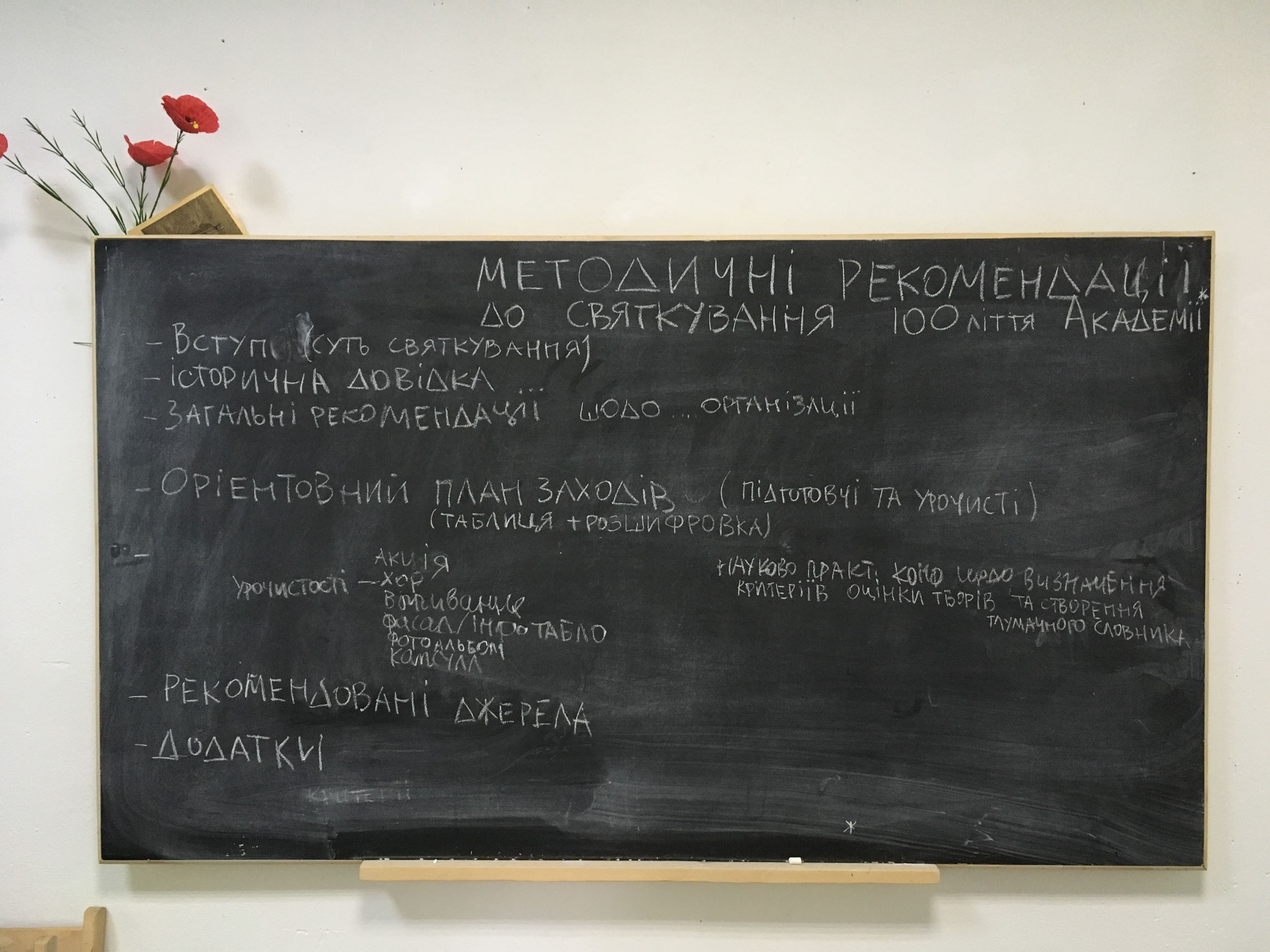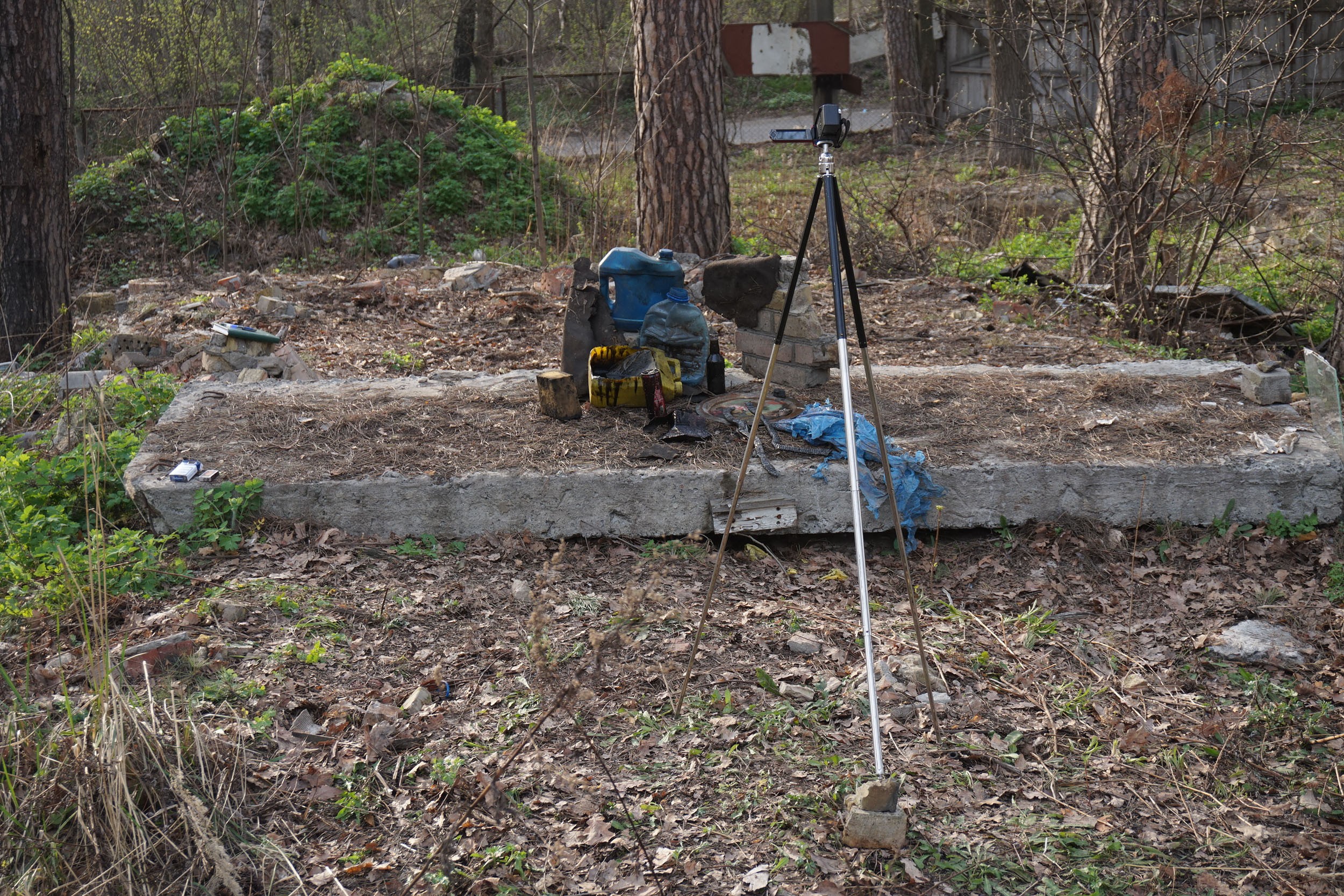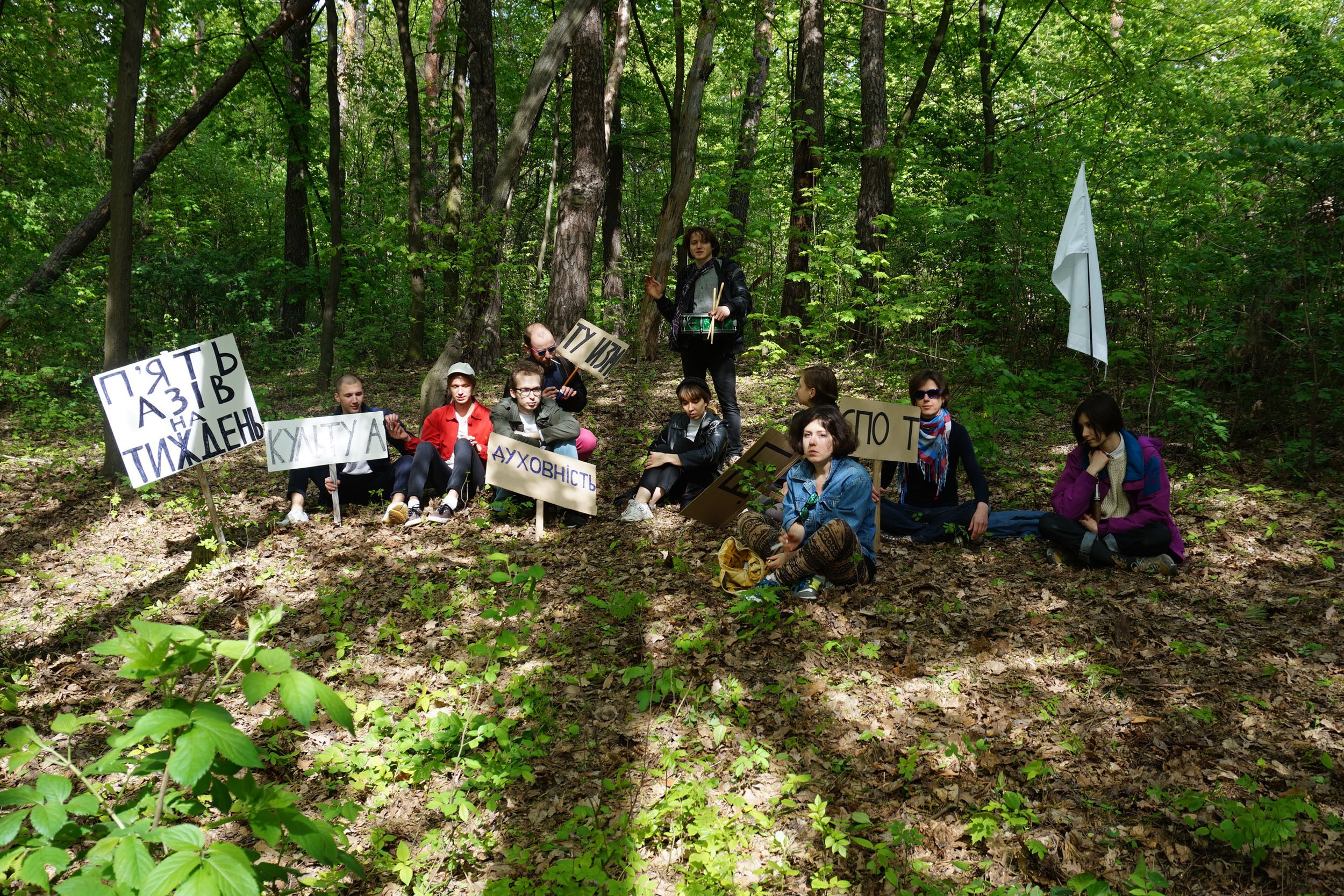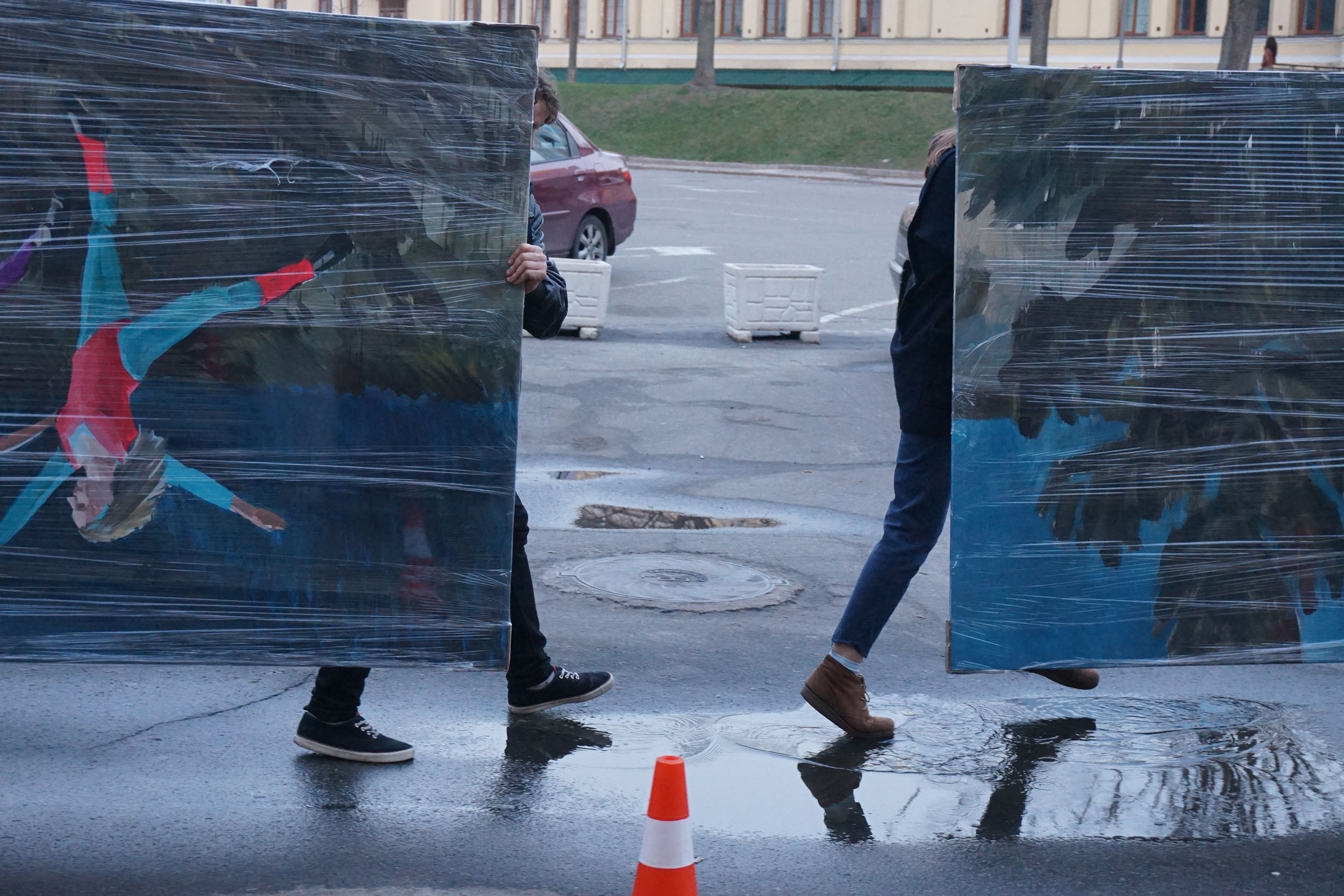Graphical chapter
“Course of Art”
of Method Fund
Educational practices of the “Course of Art” originate from the problematisation of education. The critical attitude from which such problematisation is derived contains both a historical analysis of the educational process and a connection with the reality of everyday experience. We distinguish between the process of learning and the educational process. Situational formation (shaping) appears in the opportunity provided by the space of educational experience.

“Captivation” is a working tactic for artistic (and educational) practices developed by the “Course of Art” of Method Fund. The word “captivation” in the Ukrainian language is linguistically disturbing. It contains a double action with opposite meanings. We can be captivated (fascinated) by an event, an image, a piece of news; but this relatively safe meaning of the word captivation (delight, passion) also includes the meaning of capture, intrusion, occupation, possession, understanding, and therefore indicates the violent status of an action or state. I capture/grasp/master an event, image, some news, or meaning.

We use the word “captivation” to denote a methodological principle/artistic tactic that confers procedurality, defines an action that aims to concretise (or return) the experience, sensation, perception. The content of “captivation” is specified in the circle of other artistic tactics: intervention, contextualisation, cultural situation, repetition, problematisation.

The tactical approach of intervention allows us to interact with an art academy and a museum. In the current conditions, this technique helps us distinguish between our practices of building relationships with those traditions and knowledge that are maintained and reproduced here.
We brazenly confuse methodological artistic and analytical approaches. The methodological storm raises questions about our familiar approaches to the analysis of images and gestures, their production and forms of presentation, as well as removes the fear of analysing a particular historical period, tradition. Through the method of intervention, we keep tensions in the gesture of distancing and involving in the process: how we look at something and choose, systematise, construct, and how we share it with others.

Context or contextualisation – these are the words that are a priori perceived as essential for contemporary art. Traditionally, the context is considered as secondary in comparison with a work of art; it is only a background or frame for an action, gesture or statement. However, there is a significant difference between this understanding of the context in art and the method proposed and practiced by us: context is seen as an effective and equal element of artistic production. The context and artwork produce each other. The context is revealed and formed in each artistic gesture/experience.
Contextualisation for time - and space-appropriate educational practices of the “Course of Art” (this also applies to the ways of art production) draws attention to local cultural specifics: for example, taking into account mutual influence, imitation and breaks in relation to the paradigm and models of Western modernity or in relation to the art system in its modern configuration, or undermining the conditional post-Soviet/post-socialist context, peripherality, or culture that is catching up with something.

Cultural situation is an artistic strategy of intervention in the reality of the Slovak artist Július Koller (1939-2007). Koller’s idea was that access to active action in everyday life can be found through the practical construction of a situation. This act of manifestation of the image of contemporary culture is possible due to the simultaneous combination of re-appropriation of existing situations and objects with the subjective experience of the artist involved in the process. Everyday life becomes very detailed, accessible for criticism, resistance, for active conscious action, and most importantly – for creating a new cultural reality.
To reveal a cultural situation means to work it out. Being the results of our specific decisions seeking form in space and time, boundaries cut through a homogeneous space. This is a temporary capture and release of space, which is characterised by the duality and simultaneity of the procedure: the idea of the not yet established, the ability to see the potentiality of the present moment, and reflection on them.

Repetition. Following the guidance for reinventing the imperatives of art and ways of reasoning about contemporary (critical) art, we pay attention to the rethinking of previous artistic experience. The task of repetition is to step away from the conventional uncritical borrowing of artistic techniques and means of production and make an attempt to see them as a problem, to test well-established art forms for their effectiveness and relevance to the present day. By repeating, reliving the tools of artists – approaches and methods, means and forms, work with different contexts – we re-actualise them to create an image of the culture we live in.

Problematisation of art forms is also the starting point for the development of effective forms of expression and content that would maintain contact with the reality of experience and the surrounding space. Problematisation is a methodological approach proposed by Michel Foucault. He revised the critical guidance in philosophy, the implementation of which is possible in the analysis of problematisations: how and why certain types of behaviour, phenomena or processes become a problem; what elements are significant, what is the form and principle of a particular problematisation, what are its influence, effect and consequences. Problematisation is not a consequence/reflection of the context or situation, but it is always an original, specific single response of a thought to the situation or context. In this sense, problematisation is related to the imaginary, because in the process of problematisation and its historical analysis, the original relationship between the thought and real situation is established. Thus, the goal of criticism is re-problematisation.

Education is a space for experiment where knowledge emerges; it is a space of imagination and design (captivation and distancing). Due to the situational experimental mode, educational practices free up space and time for the actor to problematize the effects and consequences of their activities.
Situationality, contextualisation, critical guidance to problematisation, the emphasis on practice seem to us inseparable from reflections on the art form. Our specific responses to the “given” seek their design, articulation and form of expression; but form-making in turn reveals things. We should temporarily seize space, get carried away and make room for the representation of the not yet established, the opportunity to see the potentiality of the present moment and to reflect on it.
